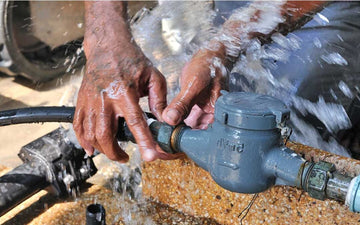Water is one of the most unpredictable elements, making the ability to detect leaks in real-time crucial. Imagine a scenario where a minor leak, if undetected, causes significant damage. Here, real-time alerts not only save infrastructure but also protect investments. These are not just futuristic technologies but current necessities. For a comprehensive understanding of its fundamentals, you might want to delve into the [technology behind smart water leak detectors](https://theconnectedshop.com/blogs/tech-talk/the-technology-behind-smart-water-leak-detectors-how-do-they-work).
Increasing global climate variations, urban expansion, and aging infrastructure make the prospect of leaks more likely. The real significance lies in the ability of real-time systems to warn stakeholders instantly. Industries cannot afford the downtime or costs associated with water damage. Hence, integrating real-time alerts is more of a need than a choice.
Industries across the board are increasingly turning towards these innovative solutions. For QA professionals, this shift necessitates an understanding of deployment and integration. You can learn more about whole-house leak detection and its potential industrial relevance at our [Whole-House Water Leak Detection](https://dripx.io/blogs/our-insights/whole-house-water-leak-detection) resource.

How Real-Time Alerts Function
The backbone of these systems is a combination of advanced sensor technologies and communication networks. When the sensor detects anomalous moisture levels, it communicates with the central system to send an alert. The beauty lies in its ability to provide instantaneous updates on leak locations and severity.
In an industrial context, such as large manufacturing plants or data centers, prompt notification can prevent catastrophic losses. The [IoT Water Leak Detector](https://dripx.io/blogs/our-insights/iot-water-leak-detector) offers insights into how the Internet of Things is revolutionizing leak detection, ensuring minimal resource loss.
Benefits of Implementing Real-Time Alerts
The proactive nature of real-time alerts means businesses can focus on growth without the looming threat of unforeseen water disasters. The primary benefits include:
- Minimized Water Damage: Swift detection leads to swift intervention.
- Cost Savings: Reduces repair costs and insurance premiums.
- Resource Efficiency: More sustainable management of water resources.
Challenges in Adoption
No technology is devoid of challenges. Potential issues include:
- High Initial Setup Costs: Particularly for large-scale installations.
- Maintenance: Ensuring sensors are functional and calibrated.
- Data Management: Handling and interpreting real-time data effectively.

The Future of Water Leak Alerts
The future shines bright for real-time alert systems as AI and machine learning are integrated, offering predictive capabilities. Such advancements could enable preemptive actions, taking protection a step further. The [Infrared Water Leak Detector](https://dripx.io/blogs/our-insights/infrared-water-leak-detector) offers an example of cutting-edge technology pushing boundaries.
Industry QA professionals must remain updated, ensuring they leverage these systems fully for optimal QA processes.
FAQs
What industries benefit the most from real-time water leak alerts?
Industries such as manufacturing, data centers, healthcare, and any infrastructure-dependent fields greatly benefit from these alerts.
Are real-time alerts expensive to maintain?
While initial costs can be high, maintenance costs generally decrease over time as technology improves.
Can real-time alerts integrate with existing systems?
Yes, most modern systems are designed to integrate seamlessly with existing infrastructure.
For more insights, [visit our in-depth blog](https://dripx.io/blogs/our-insights/thermal-imaging-leak-detector) on thermal imaging leak detection.






